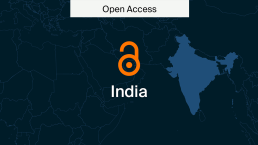
Books, Literacy and Digital Spaces
World book day brings with it the opportunity to reflect on the books we read and the way they shape us. Interestingly, it also gives us time to consider the ways in which we read.
For World Book Day this year, we’re having a look at the way reading and literacy have evolved and how they may continue to change through the advent of new technologies.
Digital Reading
As of January 2024, 5.35 billion people are internet users, though this varies based on location (standing at 92% in countries with higher income levels and 26% in low-income markets). With mobile phones becoming more and more accessible worldwide, the impact of internet use on the way we live and learn is of greater interest.
One of the ways that the internet has changed learning is through reading, as explored in a recent literature review published in the European Journal of Investigation in Health, Psychology and Education. This review compares digital and paper-based reading. More specifically, it explores electronic vs paper reading preferences and behaviors in relation to a variety of factors such as socioeconomic status. It’s important to note that comparisons become more difficult as technologies function increasingly differently to traditional paper-based texts.
Digital texts in a digital space
The digital space that digital texts exist within has led to a shift in our understanding of what a book is. For example, when accessing academic books online today you can travel straight to a reference source much more easily than sources indexed in a printed textbook. Interactive elements such as this expand the boundaries of a page.
Another way to access books outside of print media is audiobooks. Audiobooks have become increasingly popular in the last decade, giving rise to a new way of reading. New consumer technologies will continue to spur changes in this space, including AI.
Artificial Intelligence, publishing and reading
The AI market size is set to reach $407 billion by 2027—more than quadruple what it was valued in 2022. The impacts of the AI revolution are being discussed everywhere today. As the usage of, demand for and value of AI continue to grow, industries will have to adapt.
The assistance provided by AI in research is both one of the most widely discussed challenges and advantages of AI. It cuts down the often lengthy researching process but also presents issues regarding authorship and copyright.
Whether access to AI tools will transform our relationship with books and reading like the emergence of the internet did is yet to be understood. However, it’ll be exciting to see how increased usage of AI affects people’s reading habits, literacy and engagement with larger texts.
MDPI Books
The offering of digital/online versions of MDPI Books gives readers who are unable to access a physical book the ability to openly access research, while maintaining access to print versions of books. Making digital resources openly accessible is core to the values of MDPI Books. To read more about the advantages of MDPI Books in an increasingly digital world, you can read our previous blog post on the topic.
Retaining copyright with MDPI
Retaining copyright is important to maintain intellectual property rights over visual and audio creative works. The type of copyright an author published under depends on the aims of and scope of their work. All works published by MDPI are published under a CC BY license. To learn more about copyright at MDPI, you can access our recent blog post that tells you all you need to know about understanding copyright and open access publishing.










